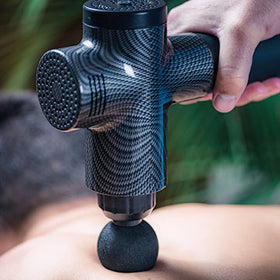over $250.00
What's unique about physiotherapy tables?
Treatment tables for physiotherapists and chiropractors typically differ from regular massage tables in several ways to accommodate the specific needs and techniques used in these professions. Manufacturers like Cardon, Oakworks, and Chattanooga have taken these special requirements into consideration.
Here are some common differences:
Adjustability:
Treatment tables for physiotherapists and chiropractors often feature a greater range of adjustability compared to regular massage tables. They may have multiple sections that can be independently adjusted to accommodate various treatment positions and techniques. These tables can be adjusted for height, incline, decline, and tilt, allowing practitioners to position their clients optimally for specific therapies.
Sturdiness and stability:
Since physiotherapy and chiropractic treatments often involve more active movements and manipulations, treatment tables are typically designed to be sturdy and stable. They may have reinforced frames, thicker padding, and durable construction to withstand the stresses and forces applied during treatments.
Accessory options:
Treatment tables for physiotherapists and chiropractors often come with additional accessory options to enhance treatment capabilities. These can include detachable headrests, armrests, side extensions, and removable sections to accommodate different treatment techniques and body positions.
Specialised features:
Depending on the specific requirements of the practitioner, treatment tables may have specialised features. For example, chiropractic tables might have drop sections that can be adjusted to provide targeted spinal adjustments. Some physiotherapy tables may incorporate traction mechanisms or other specialised attachments to assist with specific therapies.
Portability and storage:
While some treatment tables are stationary, many are designed to be portable for practitioners who need to travel or work in multiple locations. Portable treatment tables often feature folding mechanisms, lightweight materials, and carrying cases for easy transportation and storage.
Accessibility:
Physiotherapy and chiropractic treatments often require easy access to the patient's body for assessments and manipulations. As a result, treatment tables for these professions may have features such as adjustable face cradles, removable armrests, or drop-away sections, allowing practitioners to position their patients optimally for effective treatment.
When selecting a table, it's crucial to consider the specific needs and treatment modalities of the practitioner and ensure the table aligns with those requirements. Consulting with industry professionals or suppliers can provide valuable guidance in choosing the most suitable treatment table for physiotherapy or chiropractic practice.

